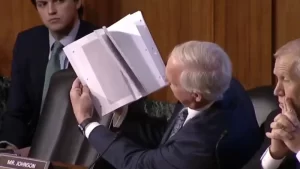Tel Aviv: The ongoing crisis in Sri Lanka and Pakistan, triggered by mismanagement of the economy by the petuman government, once again bring a focus back to the “Debt Trap” of China.Writing for Times Israel, Fabien Baussart said this crisis was undoubtedly fed by politicians who tried to enrich themselves while clinging to power. However, they get short-term support from Chinese projects financed by the last banking institution.These factors increase to become the nuances of the economy around the neck of the beneficiary, Baussart said, which is the CPFA president (center of political and foreign affairs).He argued that it was a belt and road initiative (BRI) in Sri Lanka which caused the government to collapse in the face of road protests caused by severe essential commodity deficiencies.
“In Pakistan, it is a very large Chinese economic corridor Pakistani (CPE), called” East Indian Chinese company “, a symbol of colonization. The sound, dimming media oppression, promised to return as Pakistan going to the final election this year,” wrote Baussart.Furthermore, the CPFA president explained how the list of countries was trapped ‘by Chinese debt to grow More than 40 countries felt the impact of Chinese virtues that seemed to be ready to attract their people from poverty, but instead landed them into multiple debt and became difficult to serve, he said.
Among them were Laos, Zambia, and Kyrgyzstan. They mostly include less developed economies, but some like Malaysia are intermediaries.China belt and Road Initiative (BRI) have left a number of low and medium-sized (LMIC) countries burdened with “hidden debt” with a total of USD 385 billion, according to new research.This finding is part of a report published by Aiddata, an international development research laboratory based in College of William and Mary in Virginia. According to this report, China has used debt rather than assistance to establish a dominant position in the international development financial market.
This report has analyzed more than 13,000 debt and financing projects worth more than USD 843 billion in 165 countries.According to Aiddata, more than 40 LMICs now have a level of debt exposure to China higher than 10 percent of their national gross domestic product.The number of “mega-projects” – financed with a loan worth USD 500 million or more – approved every year three times over the first five years of BRI implementation. Despite the larger loans and expanded loan portfolios, BRI has not yet led to major changes in sectoral or geographical composition of China’s foreign development program, the report said. According to the report, 35 percent of the BRI infrastructure project portfolio has experienced major implementation problems, such as corruption scandals, labor violations, environmental hazards, and public protests. In comparison, only 21 percent of the portfolio of Chinese government infrastructure projects outside BRI experienced similar implementation problems, according to Aiddata.







